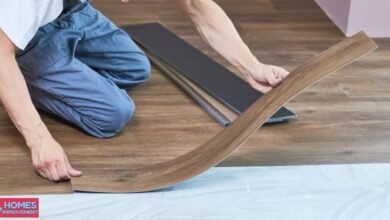Maximizing Small Spaces with Custom-made Furniture

Maximizing space in a small home isn’t about limiting your lifestyle — it’s about unlocking creative potential through smart design. Custom-made furniture lets you take full control of your space, shaping every corner to suit your needs, style, and daily routine. If you’ve ever struggled to make off-the-shelf pieces work in your studio apartment or awkward living layout, you’re not alone — and you’re not out of options. In this article, you’ll discover how tailored furniture can help you live larger, organize smarter, and breathe easier in your small but mighty space.
Understanding Small Space Challenges: Why You Deserve a Perfect Fit
When Standard Furniture Fails: Common Pain Points You Face
You’ve measured. Tried multiple layouts. Bought that “compact” sofa everyone recommended. Still, your space feels cramped and awkward. Standard furniture is often designed for standard spaces, ignoring the real-life challenges of narrow kitchens, uneven walls, or those mysterious architectural nooks. Whether your bed juts into a walkway or your wardrobe leaves wasted overhead space, ill-fitting furniture can turn everyday living into a frustrating game of Tetris.
Beyond functionality, there’s an emotional toll. You may feel like you’re constantly compromising — choosing storage over style, or aesthetics over usability. The truth? You shouldn’t have to. Your home should work for you, not the other way around.
Imagine the Possibilities: Visualizing Your Dream Layout
What if every piece of furniture in your home had a purpose — and a perfect place to fit? Instead of working around your furniture, your furniture could work around you. Picture a bed frame with hidden drawers that eliminate the need for a bulky dresser. A dining table that folds seamlessly into the wall. A bookshelf built into that awkward alcove you’ve never known what to do with.
Visualizing custom solutions allows you to dream big within your small square footage. Thanks to 3D modeling and mockups, many custom furniture creators now offer digital previews, helping you fine-tune every detail before a single tool is lifted. It’s not only about furniture — it’s about creating a lifestyle that reflects who you are, even in a cozy footprint.
SEE: Inspiring Small Space Transformations with Custom Furniture
Before and After: Tiny Apartment to Spacious Haven
The difference is often night and day. Take a 35-square-meter studio once overcrowded with mismatched furniture. After a custom redesign, it now features a raised bed with storage stairs, a fold-out desk integrated into a wall panel, and a modular sofa that converts into guest bedding. Suddenly, one room becomes five: bedroom, living space, office, guest room, and storage zone.
These transformations aren’t just about aesthetics — they’re about making space for the life you want. Custom furniture can turn dead corners into work nooks, vertical space into storage wonders, and tight entryways into welcoming vestibules full of style and function.
Customer Stories: How Custom Pieces Changed Their Routine
Many small-space dwellers find that custom furniture doesn’t just change how their home looks — it changes how they live. Anna, a remote worker in a micro-apartment, couldn’t find a desk that fit her wall dimensions and height needs. A custom unit gave her ergonomic comfort, extra storage, and the ability to transform the desk into a dining table for two. “For the first time, I felt in control of my space,” she says.
Another couple with a toddler maximized their limited living room with a built-in bench seat that doubles as a toy chest and guest bed. “We didn’t have to move — we just had to think smarter,” they shared. These stories are proof that with the right design, small doesn’t mean sacrifice.
THINK: The Top Benefits of Choosing Custom-made Furniture
Maximize Every Inch: Tailored Storage Solutions
In a small space, every centimeter counts. Custom furniture is engineered to fit your dimensions to the millimeter — no gaps, no wasted corners. Built-in floor-to-ceiling wardrobes, under-stair drawers, and furniture with dual functions (like storage ottomans or beds with lifts) ensure that every possible zone is serving you.
Custom-built shelving can follow sloped ceilings or wrap around windows. Even tricky areas — like the space above doors or the gap under the sink — can become valuable storage that standard pieces overlook. When storage is designed around your lifestyle, clutter disappears, and so does the stress it brings.
Reflect Your Style: Personalized Designs That Speak to You
Beyond function, custom pieces give you something equally valuable: character. Forget generic furniture in cookie-cutter colors. With custom-made furniture, you choose everything — from proportions and color palettes to textures and hardware — so it reflects your taste and tells your story.
Do you lean toward warm woods and soft lines? Sleek metal frames with minimalist appeal? Rustic touches that whisper “cabin comfort”? Whatever your style, custom furniture ensures your space feels authentically you, not like page 42 in a sales catalog.
Touch and Feel: Select Materials That Satisfy Your Senses
Your furniture should do more than just look good — it should feel right. That sense of quality when you open a solid-wood drawer, the warm grain of oak under your fingertips, the softness of a fabric chosen specifically for your comfort — these tactile elements create a sensory experience that off-the-shelf furniture rarely offers.
When you’re involved in material selection, you can choose hypoallergenic fabrics, eco-conscious woods, or scratch-resistant finishes ideal for pets and kids. Every detail contributes to a home that doesn’t just look beautiful, but lives beautifully too.
DO: Your Step-by-Step Guide to Designing Custom Pieces
Assess Your Space: Identifying Your Unique Needs
Start by looking honestly at how you use your space. Where do bottlenecks happen? What items lack a proper home? Take detailed measurements, note obstructing elements like radiators or uneven walls, and write down any essential functions your furniture must serve — sleeping, dining, working, entertaining, or all of the above.
Also consider your flow. Can you move comfortably between pieces? Do doors or chairs block pathways? The better you understand your physical and functional needs, the more effective your custom solution will be.
Collaborate Seamlessly: Tips for a Smooth Design Process
Designing custom furniture is a collaborative journey. Start with clear communication. Bring photos, sketches, or mood boards to your consultation. Discuss not just what you want, but why you want it.
Work with designers or artisans who listen to your needs and offer practical suggestions. Ask for 3D renderings or physical samples when possible, and clarify timeline expectations. The more engaged you are, the better the final outcome. A good designer will align your vision with function, budget, and reality — resulting in something truly unique and deeply satisfying.
Approve and Create: From Mockups to Final Delivery
Once you agree on the design, most professionals will provide a final mockup or prototype. This is your chance to tweak dimensions, adjust colors, or refine hardware. Don’t rush this step — small changes now can make a big difference later.
After approval, skilled craftsmen handle production. Depending on complexity, production can take 2 to 8 weeks, but the result is one-of-a-kind. When your piece arrives, it will be more than just furniture — it will be a solution designed for your life.
Budgeting Wisely: Getting High-Quality Custom Furniture on Any Budget
Prioritize Key Pieces: Where to Invest First
If your budget doesn’t cover a full suite of custom furniture, focus on the pieces that will have the biggest impact. Start with multi-functional items like a bed with integrated storage or a fold-down dining table. These not only save space but pack multiple uses into one footprint.
Think about the furniture you use daily. A custom desk may be more valuable than a made-to-measure side table. Prioritize based on function, not just form, and build your collection over time as budget allows.
Smart Mix: Combining Custom with Ready-made Solutions
Custom furniture doesn’t need to fill your whole space. Pair high-impact custom pieces with affordable mass-market items to strike a balance between budget and benefit. For example, a built-in wardrobe can be complemented by modular shelving from a retail store or DIY upcycled items.
The key is cohesion. Match colors, materials, or hardware to create a consistent look. Let the custom items anchor your aesthetic and functionality, while ready-made pieces support them quietly in the background.
Negotiation Tips: Getting the Best Value from Artisans
Don’t be afraid to talk openly about your budget. Many artisans can suggest alternative materials or simplify builds to reduce costs without compromising on quality. Ask for a detailed quote that breaks down components, so you know where your money goes.
Also, consider batching projects to save on design fees. Ordering a matching desk and cabinet, for example, may cost less per item than designing each separately. And always check references or portfolios to ensure you’re working with trustworthy creators who deliver what they promise.
CARE: How You Can Keep Your Custom Furniture Looking New
Daily Upkeep: Cleaning and Protecting Your Investment
Just like any premium product, custom furniture thrives with simple, consistent care. Dust regularly with microfiber cloths, avoid harsh chemicals, and use coasters or mats to prevent water and heat damage. For wood, natural oils or polishes help maintain the finish and enhance its natural beauty.
Make cleaning part of your routine, not a chore. Quick touch-ups—like wiping fingerprints or cleaning up spills—can prevent long-term damage and keep your pieces looking their best every day.
Simple Fixes: Quick Repairs to Extend Lifespan
Even the best-built furniture faces daily wear and tear. Loose handles, minor scratches, or squeaky hinges are often easily fixed with basic tools. Keep a small repair kit handy, including wood filler sticks, fabric glue, and a screwdriver set.
If you spot an issue early, take action. Addressing small problems promptly can prevent expensive repairs later. And for complex issues, don’t hesitate to reach out to the original artisan—they often offer maintenance services or advice tailored to your specific build.
Professional Care: When to Schedule Expert Maintenance
For items made of fine woods, unique finishes, or custom joinery, occasional professional upkeep pays off. Schedule touch-ups or refinishing every few years, especially for high-use pieces. Upholstered furniture may also benefit from a deep clean or fabric tightening.
Think of it like a tune-up for your home. Investing in the longevity of your furniture protects your original investment, maintains resale value, and ensures your space keeps looking and feeling like new.
Ready to Transform Your Space? Your Next Steps
Book Your Free Design Consultation Today
Still unsure where to start? A professional design consultation can clarify your needs and spark wild, creative ideas you hadn’t thought possible. Most custom furniture makers offer free or low-cost consultations — a no-pressure way to begin your journey.
Take that first step. You might just discover what your space has been missing all along.
Download Your Custom Furniture Planning Guide
Need help organizing your thoughts before talking to a designer? Download a free planning guide that walks you through the process, from measuring your space to defining your style. It’s your blueprint to smarter living, in any square meter.
Start thoughtful, and build smart.
Request a Personalized Quote Now
Every custom project is unique — and so is the price. Get a personalized quote tailored to your needs, budget, and timeline. Whether you’re ready to go or just exploring your options, a quote helps you plan ahead and make informed decisions.
Your dream space is closer than you think — and custom furniture is the key to unlocking it.
If you need more information, click on this link.





